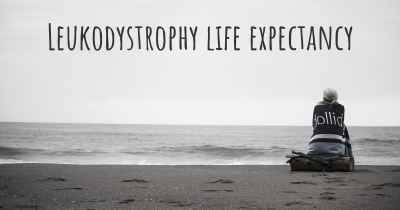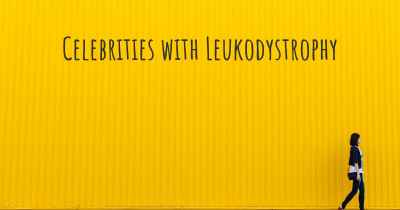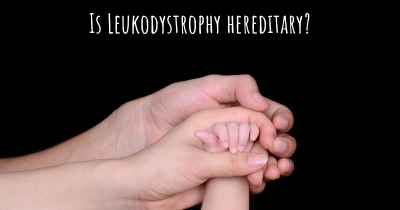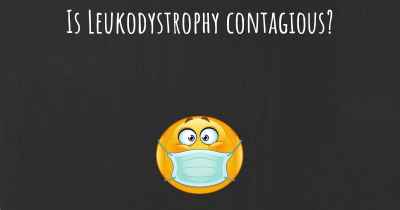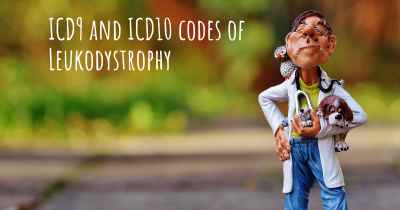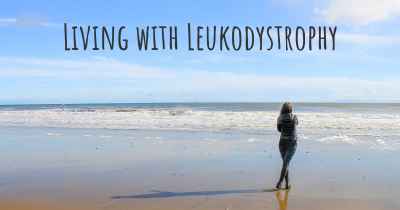How is Leukodystrophy diagnosed?
See how Leukodystrophy is diagnosed. Which specialists are essential to meet, what tests are needed and other useful information for the diagnosis of Leukodystrophy
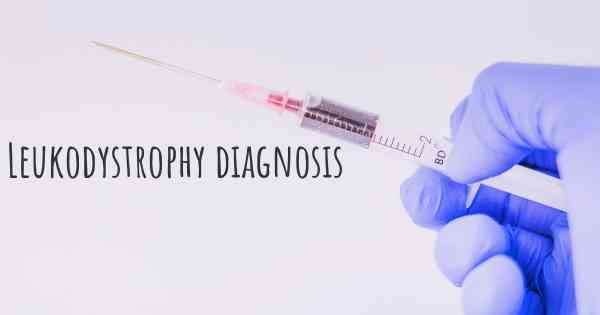
How is Leukodystrophy Diagnosed?
Leukodystrophy is a group of rare genetic disorders that affect the white matter of the brain. These disorders are characterized by the abnormal development or destruction of the myelin sheath, which is the protective covering of nerve fibers. Due to the wide range of leukodystrophies and their varying symptoms, diagnosing these conditions can be challenging. However, there are several key steps and diagnostic tools that healthcare professionals use to identify leukodystrophy.
Medical History and Physical Examination
The diagnostic process typically begins with a thorough medical history review and physical examination. The healthcare provider will ask detailed questions about the patient's symptoms, family history, and any previous medical conditions. They will also perform a comprehensive physical examination to assess neurological function and look for any signs of leukodystrophy.
Neurological Evaluation
A neurological evaluation is crucial in diagnosing leukodystrophy. This evaluation involves assessing the patient's reflexes, muscle tone, coordination, and sensory function. The healthcare provider will also evaluate cognitive abilities, speech, and vision. Any abnormalities or delays in these areas may indicate the presence of a leukodystrophy.
Genetic Testing
Genetic testing plays a vital role in diagnosing leukodystrophy. It involves analyzing the patient's DNA to identify specific genetic mutations associated with leukodystrophies. There are different types of genetic tests available, including:
- Gene sequencing: This test examines the patient's DNA sequence to identify mutations in specific genes known to cause leukodystrophy.
- Gene deletion/duplication analysis: This test looks for larger genetic changes, such as deletions or duplications of genetic material, which can also lead to leukodystrophy.
- Next-generation sequencing: This advanced technique allows for the simultaneous analysis of multiple genes, providing a more comprehensive genetic evaluation.
Genetic testing can help confirm a diagnosis of leukodystrophy and determine the specific subtype of the condition, which is crucial for appropriate management and treatment decisions.
Brain Imaging
Imaging studies are essential in the diagnostic process of leukodystrophy. Magnetic resonance imaging (MRI) is the most commonly used imaging technique to evaluate the brain's white matter. It can reveal abnormalities in the myelin sheath and detect changes in brain structure. The MRI findings, combined with clinical symptoms and genetic test results, can provide valuable information for diagnosing leukodystrophy.
Other Diagnostic Tests
In some cases, additional diagnostic tests may be necessary to support the diagnosis of leukodystrophy. These tests may include:
- Electroencephalogram (EEG): This test measures the electrical activity of the brain and can help identify abnormal brain wave patterns associated with certain types of leukodystrophy.
- Nerve conduction studies: These tests evaluate the speed and strength of electrical signals as they travel along the nerves, helping to assess nerve damage.
- Metabolic testing: Blood and urine tests can be performed to evaluate metabolic abnormalities that may be associated with specific leukodystrophies.
Consultation with Specialists
Given the complexity of leukodystrophy, healthcare providers often collaborate with various specialists to confirm the diagnosis and provide comprehensive care. These specialists may include neurologists, geneticists, radiologists, and metabolic specialists. Their expertise and input are invaluable in reaching an accurate diagnosis.
In conclusion, diagnosing leukodystrophy involves a combination of medical history review, physical examination, neurological evaluation, genetic testing, brain imaging, and sometimes additional diagnostic tests. The process requires the expertise of healthcare professionals and collaboration between different specialists. Early and accurate diagnosis is crucial for appropriate management, treatment, and support for individuals and families affected by leukodystrophy.
Posted Aug 6, 2017 by cjackson1982 1500
Posted Aug 7, 2017 by Todd 2340
Posted Aug 18, 2017 by David N Kayla 200
Posted Sep 24, 2017 by Leonor 400
